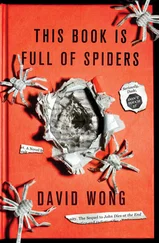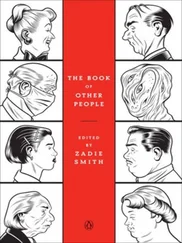2. ST BONAVENTURE’S HEAD
This great Catholic theologian and philosopher is one person who definitely did not rest in peace. Almost 300 years after his death in 1274, his remains were caught in the middle of a French religious war that pitted the Roman Catholic Church against the Protestant Huguenots. In 1562 St Bonaventure’s tomb at Lyons was plundered. While his body was publicly burned, the head — said to be perfectly preserved — was saved and hidden by one of the faithful. It disappeared, however, during the French Revolution and has not been seen since.
3. PAUL BROCA’S BRAIN
In one of the less-frequented corners of the Musée de l’Homme (Museum of Man) in Paris are numerous bottles containing human brains. Some belonged to intellectuals, others to criminals. But perhaps the most distinguished of the specimens is that of Paul Broca, a nineteenth-century physician and anthropologist who was the father of modern brain surgery.
4. DEL CLOSE’S SKULL
Close was an improvisational comedian who trained John Belushi, Bill Murray and Mike Myers. Upon his death in 1999, he willed his skull to Chicago’s Goodman Theatre to be used as Yorick’s skull in productions of Hamlet . Close’s former improv partner, Charen Halpern, noted, ‘It’s not the starring role. But Del was always willing to take smaller parts.’
5. GEORGE FREDERICK COOKE’S SKULL
Even though Irish-born actor George Frederick Cooke died in 1812, he continued to get work in bit-parts. Cooke’s skull was used in productions of Hamlet before being retired to the Thomas Jefferson University Medical School library in Philadelphia.
6. BARON PIERRE DE COUBERTIN’S HEART
Lausanne, Switzerland, and Olympia, Greece, are the two most revered sites of the modern Olympic movement. Baron Pierre de Coubertin, the founder of the movement, left a part of himself in each place. His will requested that his body be buried at Lausanne, the site of the International Olympic Committee headquarters. But first his heart was to be removed and placed in a marble column at Olympia, where the ancient games were held.
7. ALBERT EINSTEIN’S BRAIN
What might have been the greatest brain of the twentieth century was not buried with the body that housed it. Albert Einstein asked that after his death his brain be removed for study. And when the great physicist died in 1955, this was done. The brain — which was neither larger nor heavier than the norm — was photographed, sectioned into 240 blocks and sent around the country to be studied by specialists. His parietal lobes were discovered to be unusually large.
8. GALILEO’S FINGER
The great astronomer died in 1642, but his body was not interred in its final resting place until 1737. During that final transfer to a mausoleum at the Church of Santa Croce in Florence on March 12, an intellectual admirer, Anton Francesco Gori, cut off Galileo’s middle finger as a keepsake. After passing through various hands, it was acquired by Florence’s Museum of the History of Science, where it is now encased in glass and pointing skyward.
9. JOSEPH HAYDN’S HEAD
The Austrian composer died in 1809. Soon after his burial, a prison warden who was an amateur phrenologist — a person who tries to correlate head bumps with character traits — hired grave-robbers to steal the head. The warden examined the skull, then gave it to an acquaintance, and a remarkable 145-year-long odyssey began. The theft of the skull was discovered in 1820, when the family of Haydn’s patron had the body disinterred. Eventually they got a skull back, but it wasn’t Haydn’s. The real item was passed from one owner to another, some of them individuals, others organisations. Finally, it found a home in a glass case at Vienna’s Society of Friends of Music. In 1932 the descendants of Haydn’s patrons once again tried to get it back. But WWII and then the cold war intervened — the body was in Austria’s Soviet quarter, but the skull in the international zone. It wasn’t until 1954 that body and skull were finally reunited.
10. MAJOR JOHN W. POWELL’S BRAIN
Geologist John W. Powell donated his brain to the Smithsonian Institution, of which he was an official, in order to settle a bet with an associate over whose brain was larger. Although Powell’s grey matter is still in the museum collection, that of his associate is nowhere to be found, which makes Powell the winner by default.
11. JOSÉ RIZAL’S VERTEBRA
José Rizal, the national hero of the Philippines, was accused of sedition, executed by the Spanish in 1896 and buried without a coffin. He was exhumed in August 1898, after the Americans took Manila. Most of Rizal’s remains are interred beneath the Rizal Monument in Luneta — all except one of his cervical vertebrae; the vertebra is enshrined like a holy relic in Fort Santiago.
12. DAN SICKLES’ LEG
Sickles was a colourful New York congressman who organised and led a brigade of volunteers at the outbreak of the Civil War. He was involved in some of the bloodiest fighting at Gettysburg, losing his own right leg in the battle. That trauma, however, apparently didn’t diminish Sickles’ personal flair. He had the leg preserved and sent to Washington, where it was exhibited in a little wooden coffin at the medical Museum of the Library of Congress. Sickles frequently visited it himself.
13. LAZZARO SPALLANZANI’S BLADDER
When Italian biologist Spallanzani died in 1799, his diseased bladder was excised for study by his colleagues. It is currently on display in the Scarpa Room in the University of Pavia in Italy, where it remains a monument to the inquisitive mind.
14.-15. GEORGE WASHINGTON’S HAIR AND TOOTH
In June 1793 George Washington gave a locket containing a clipping of his hair to his aide-de-camp, Colonel John Trumbull. When Trumbull died, he willed the lock of hair to a first cousin of the president’s, Dr James A. Washington, who passed it along to his family as sort of ‘hairloom’. George Washington’s dentist, John Greenwood, managed to acquire another collectible which the president shed from his person — the last of his natural teeth. Washington sent the tooth to Greenwood to use as a model in making a new set of dentures. The dentist kept the tooth as a souvenir, and it remained in the Greenwood family for generations.
– E.F. & M.J.T.

LONG NOSE CHAMPION MEHMET OZYUREK
DAVE EGGERS’ 4 BEST PLACES TO PUT THINGS INTO
Dave Eggers has written four books and three songs and edits McSweeney’s .
BOXES
Boxes will always be No. 1. I don’t care what anyone else says — boxes are the best. I recommend square ones for most occasions except for occasions involving hats. One of the things I like about boxes is that after you put things into a box, you can close the box with tape. They’ll stay closed, all right! Boxes = No. 1.
VASES
Flowers are best, in terms of things to put into vases, but marbles can create a good look, too. The problem with vases is that a lot of things don’t fit into them. I guess vases shouldn’t be No. 2.
CARS
Cars have one advatange over most things you can put things into: once you put something into a car, you can move it to a different place. Cars can go almost anywhere. Cars should be No. 2.
Читать дальше













